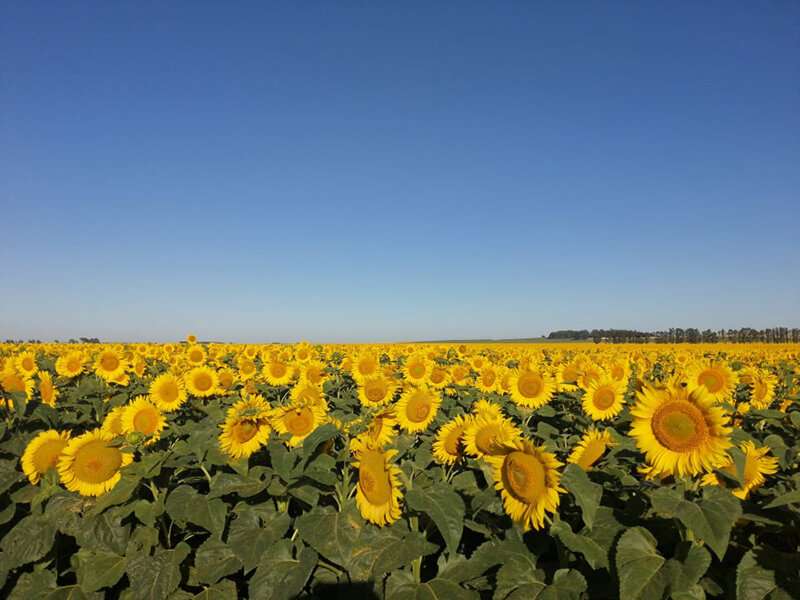Balancing nitrogen for sunflowers

Sunflowers have many uses. They are used for floral arrangements, animal feed, biofuels, and even food for us.
When grown commercially by farmers, the quality of sunflowers is based on the oil and protein concentrations in the seeds.
Sunflower oil can be used for cooking and can be made into biofuels. The protein from sunflowers is important in sunflower products like animal pellets and protein powders.
To grow quality sunflowers with a high nutritional value, farmers need to ensure the sunflowers have access to nutrients in the soil. One of the most important nutrients for sunflowers is nitrogen.
Sunflowers cannot survive without nitrogen, but too much can be a problem. Too much nitrogen can actually decrease the oil concentration in seeds, which decreases the quality of the crop.
Nahuel Reussi Calvo is a scientist in Argentina who studies sunflowers. His research aims to determine the best rate of nitrogen fertilizer that will grow high-quality sunflowers. The results were recently shared in Agronomy Journal, a publication of the American Society of Agronomy.
Finding the best nitrogen fertilizer rate has benefits beyond sunflower yields. It also minimizes the economic and environmental costs of applying fertilizer.
Modern varieties of sunflower can produce more oil and protein, but they require more nitrogen to do so.
Traditionally, scientists measure nitrogen available for sunflowers by taking soil samples before planting. However, the target nitrogen levels for these tests are not up-to-date to match the needs of modern sunflowers.
Researchers set out to determine if there were better ways to determine how much nitrogen the sunflowers need. They tested a few different methods.
First, Reussi Calvo and the team used the traditional soil sample analysis method combined with another soil sample analysis. The extra soil sample helps determine the amount of nitrogen provided in the soil when organic matter naturally breaks down.
The next method took place during the growing season. The team used sensors to measure leaf greenness at different growth stages. This is a test that has proved successful for measuring nitrogen content in crops like wheat, barley, corn, and potato.
After harvest, the team used sunflower seeds to measure grain nitrogen concentration for the third method. This is a useful tool for predicting the nutritional value of crops like corn, wheat, rice, and cotton.
Researchers determined the three new methods for measuring nitrogen for sunflowers were better than the traditional soil sample analysis method. Leaf greenness sensors were a promising tool for monitoring nitrogen during the growing season. The grain nitrogen concentration successfully diagnosed nitrogen deficiencies.
Argentina is the fourth largest sunflower producer in the world, but the average yield is much lower than other countries. By updating nitrogen recommendations for sunflower crops, scientists can decrease the yield gap and improve sunflower grain quality.
The next steps in this research will be to repeat the study on farms with different soil types, management practices, and levels of other nutrients like phosphorus and sulfur.
More information: Sergio Tovar Hernandez et al, Assessment of nitrogen diagnosis methods in sunflower, Agronomy Journal (2021). DOI: 10.1002/agj2.20685
Journal information: Agronomy Journal
Provided by American Society of Agronomy





















